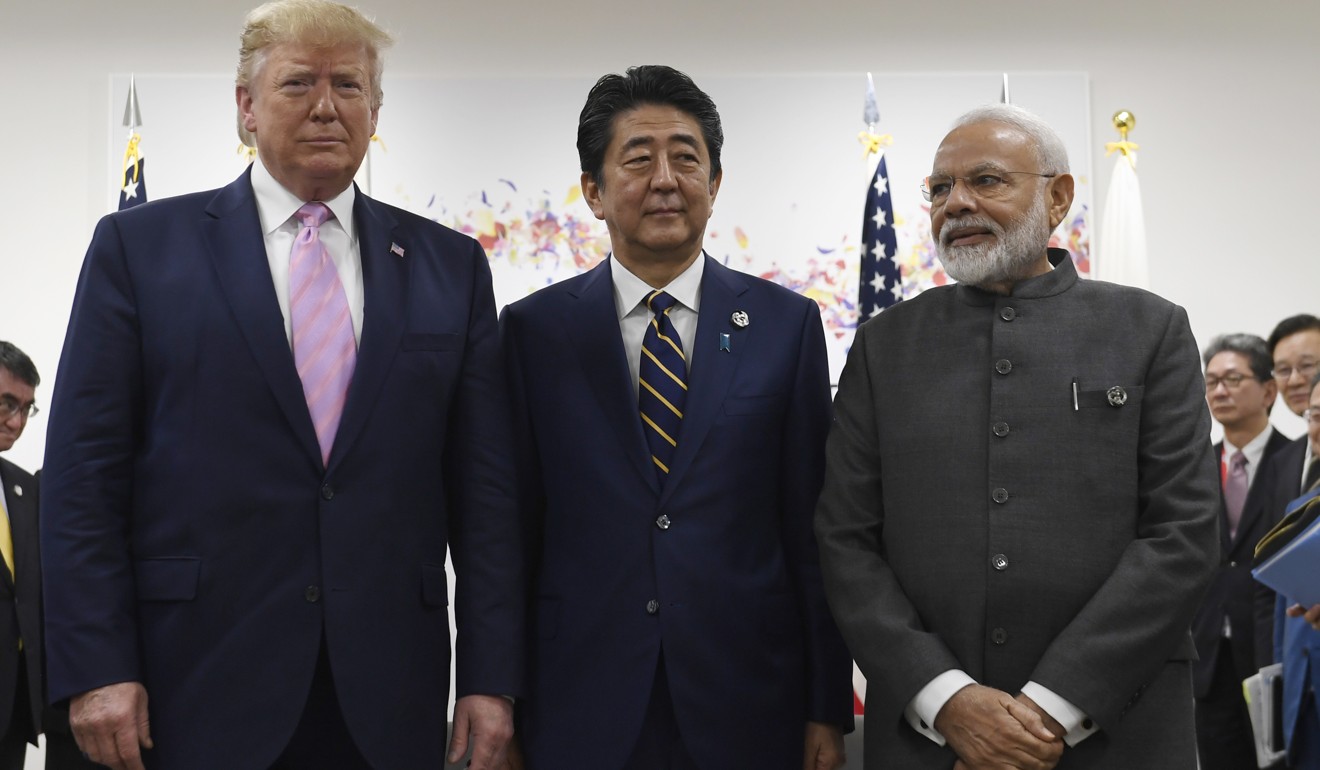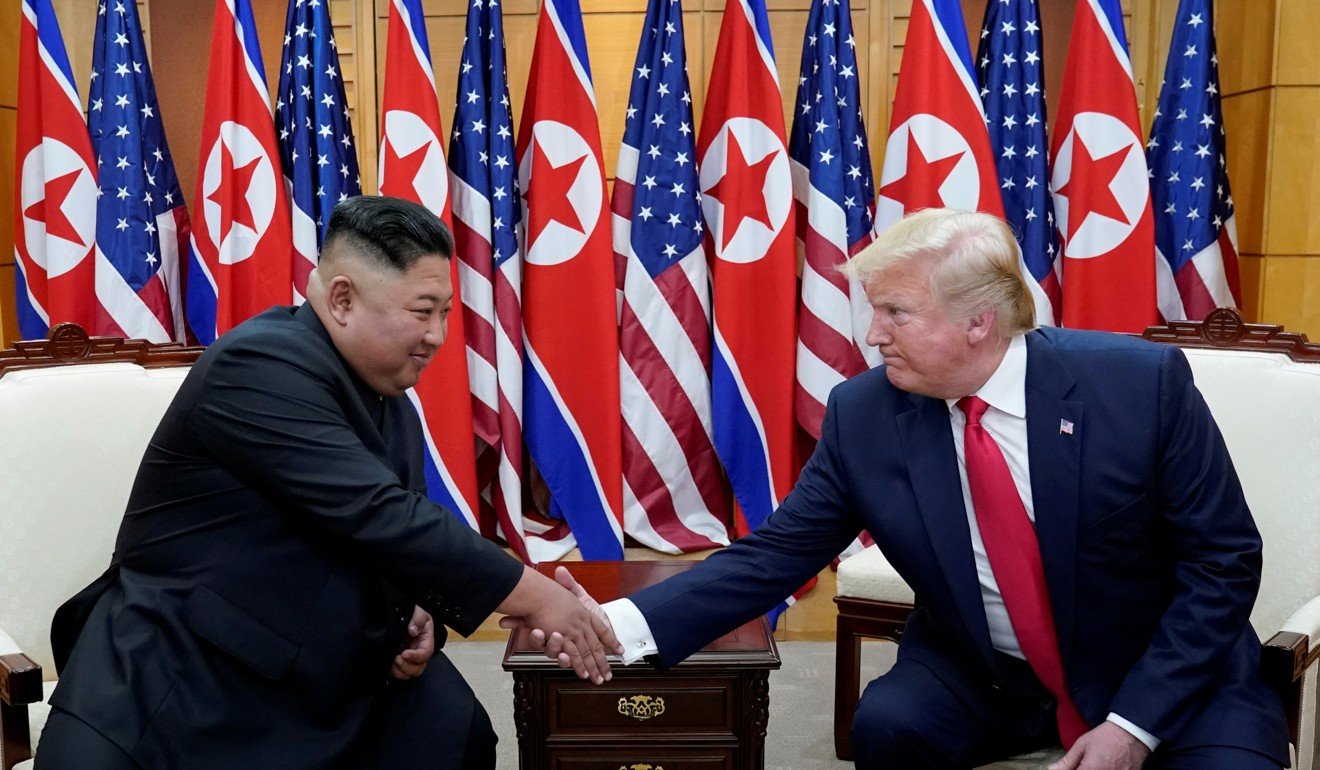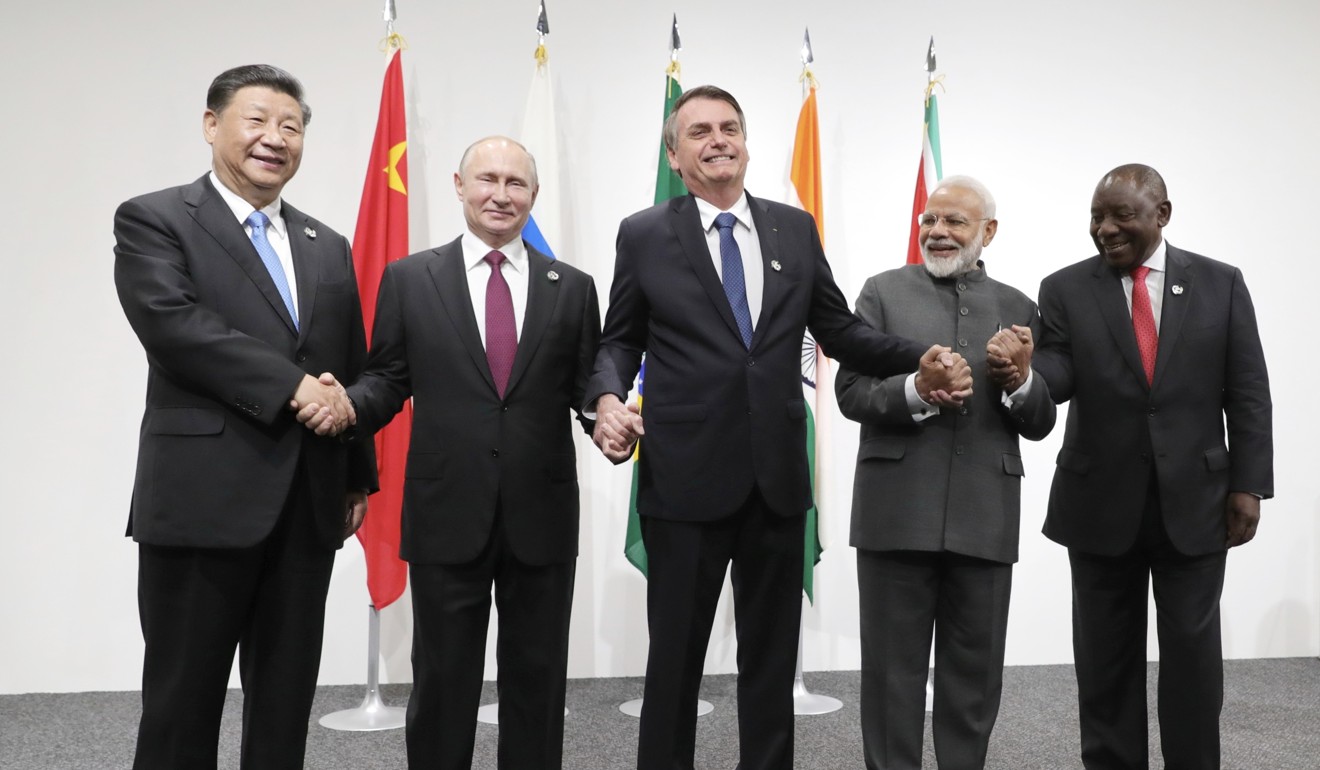Rupakjyoti Borah
 India has ties with all the major regional players and the heft to alter the balance of power, if it so wished
India has ties with all the major regional players and the heft to alter the balance of power, if it so wished
But a long tradition of ‘strategic autonomy’ is likely to see the status quo maintained, unless Beijing provokes change
The first focused on “how the three countries can work together towards an open, stable and rule-based Indo-Pacific region”, according to India’s External Affairs Ministry. The latter, meanwhile, provided an important opportunity for “the world’s leading economies [to have an] exchange of views … on the economic, political and security situation of the world”, according to Indian Prime Minister
 US President Donald Trump, Japanese Prime Minister Shinzo Abe and Modi before their G20 meeting. Photo: AP
US President Donald Trump, Japanese Prime Minister Shinzo Abe and Modi before their G20 meeting. Photo: AP
The two meetings reflect how India, with its growing economic and military heft, wields a measure of strategic influence in an Indo-Pacific region that is in flux.
In the recent past, the US has looked to counterbalance China’s rising influence in the region. But President Donald Trump’s unpredictability and diplomatic moves with North Korean strongman Kim Jong-un have upset the calculations of the leaders of China, South Korea and America’s closest ally in the region, Japan. This also extends to India, which is not sure how Trump will deal with China in the long-run.
India could well prove to be a “swing state” in these rapidly evolving diplomatic sweepstakes. As New Delhi’s economic and military muscle increases, it could either tilt the regional balance of power in favour of the US and its allies or choose to side with Russia and China – possibly creating a new multipolar order. India is also a major arms buyer and this is one card which it could play when dealing with countries like the US and Russia.
Delhi has its own reasons for maintaining close communication with the US, Japan, Russia and China. The Modi government wants to spur further economic growth and needs strong ties with its major trading partners to do so.
Relations with Washington have been bumpy, to say the least, despite India inching closer in recent times with the signing of a memorandum of understanding on logistics exchange and its participation in the Malabar naval exercises with the US and Japan.
India also stopped importing oil from
 Iran after Washington withdrew all sanction exemptions on May 2. This was a big turnaround for a country that had been one of Iran’s biggest oil buyers, importing 23.5 million tonnes over the past year.
Iran after Washington withdrew all sanction exemptions on May 2. This was a big turnaround for a country that had been one of Iran’s biggest oil buyers, importing 23.5 million tonnes over the past year.
Trumps meetings with North Korean leader Kim Jong-un have upset regional leader’s calculations. Photo: Reuters
However, there are still many issues that need to be sorted out with respect to India’s ties with countries like the US.
Delhi recently slapped retaliatory tariffs on 29 categories of US imports after Washington withdrew preferential duty concessions for certain Indian exports to the US under a programme known as the Generalised System of Preferences.
Relations with Japan, meanwhile, have seen dramatic improvement under Modi’s tenure, with his Japanese counterpart
Shinzo Abe noting many times that “the India-Japan relationship has the greatest potential of any bilateral relationship in the world”.
The pair’s economic ties have been slow to catch up, though. Bilateral trade between the two was a measly US$15.71 billion in 2017-18, as compared with US$84.44 billion for trade between India and China over the same period.
Russia, that other big regional player, is still a major defence supplier for India and the two have been working on
a deal for a delivery of Russian-made S-400 missiles, putting Delhi back in Washington’s cross hairs. Moscow also has influence in countries like Iran – where India has economic interests in the form of investments in places like the port of Chabahar – and has increasingly been making overtures towards
Pakistan, India’s neighbour and longstanding rival.
When it comes to China, India has kept its channels of communication open as seen with the informal summit between Modi and Chinese President Xi Jinping that was held in Wuhan last year. The two countries are also partners in organisations such as the Asian Infrastructure Investment Bank and the economic bloc BRICS, alongside Brazil, Russia and South Africa.
There are still unresolved border issues, however, and India is also wary of China’s ties with Pakistan. Earlier this year, China withdrew its opposition to Pakistan-based terror chief Masood Azhar being sanctioned by the United Nations, which could signal a softening of its position on the issue of Pakistan-based terror outfits and their leaders.
India, with its huge population, military capabilities and strong government, could significantly alter the balance of power in the Indo-Pacific region. However, given its tradition of strategic autonomy, Delhi is unlikely to commit to any one power bloc, even as it grows incrementally closer to the US and Japan.
That being said, it is also unlikely to give up its traditional ties with Russia. So whether India will act as a “swing state” in the Indo-Pacific may well depend on how its relations with China unfold.

No comments:
Post a Comment